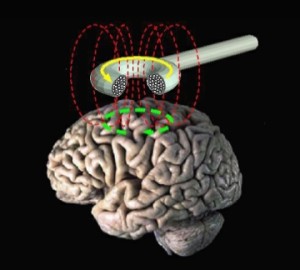
We’re getting closer to the age of brainhacking, i.e. using tech to change what our minds are capable of. Our emotions, our habits, and our perceptions are going to be altered in ways we can’t imagine, if we can afford the enhancements.
The U.S. Academies’s Institute of Medicine recently conducted a workshop on Non-Invasive Neuromodulation of the Central Nervous System, i.e. brainhacking. The topics covered by the workshop included technologies for brainhacking, challenges and opportunities in proving their effectiveness and bringing them to market, and the social, ethical, and legal issues that are likely to arise.
A report on the workshop is available from the National Academies Press (the free, digital pre-publication draft report is linked). The most interesting findings from the workshop, in my view, include:
We know very little about the brain, how it works when it’s healthy, and how disease changes the way it functions. Much more research and knowledge is needed to be able to evaluate how and whether brainhacking improves patients’ lives.
These are the conditions for which brainhacking has been researched/indicated:
- Psychiatric conditions
- Depression, especially treatment-resistant depression (this is the most well developed use, but evidence for its effectiveness is low)
- Post-traumatic stress disorder
- Obsessive-compulsive disorder
- Aggression
- Addiction
- Neurologic conditions
- Epilepsy
- Migraine
- Movement disorders
- Neuropathic pain
- Tinnitus
- Neurorehabilitation
The two main brainhacking technologies are electromagnetic and ultrasound. Electromagnetic includes electroconvulsive therapy (which has been around, and controversial, for a while) as well as different kinds of transcranial electric and magnetic stimulation.
Technical specifications include the shape and placement of coils on the head (gear), temporal characteristics and patterning of pulse sequences (zap), number and spacing of sessions (regime), combination with other therapies including medication.
Social, Legal and Ethical issues include:
- non-physical harm to patients sense of “self” — just one among many possible negative effects
- blurred lines between treatment and enhancement
- the difficulty of ensuring safety and efficacy of over-the-counter and do-it-yourself treatments
There are many unresolved commercial issues including a regulatory approval pathway and challenges for reimbursement.
Although the future of brainhacking is uncertain, here are my fun but certain-to-be inaccurate predictions for the top five brainhacking applications:
1. Modulate your mood

Transcranial magnetic brain stimulation is approved in the United States for treatment-resistant depression and a few other conditions. It’s thought that electromagnetic pulses created by magnets help make stronger connections between areas of the brain involved in mood regulation.
Our understanding of the underlying process is incomplete, for now. As our knowledge of the brain advances and we’re able to target micro-structures and modulate the magnetic fields involved, someday we could all make a quick trip to the brain clinic for a mood boost whenever we need it.
2. Get help with…damn, I forgot what I was about to say… (Clue: Memory)

Image source: Blausen.com staff. “Blausen gallery 2014”. Wikiversity Journal of Medicine. DOI:10.15347/wjm/2014.010. ISSN 20018762. (Own work) [CC BY 3.0], via Wikimedia Commons
The folks over at Harvard Medical School recommend cognitive training regimes that focus on an individual’s specific goals, strengths and weaknesses. Reading and crossword puzzles seem to help, and a new batch of applications are aiming to improve our memory as well.
One thing is certain: use it or lose it.
3. Drop bad habits and addictions
You’re craving a cigarette. ZAP! That was your brain implant weaning you from your addiction with a light electromagnetic stimulus. It could happen.
Imagine a twelve step program where step one is a trip to the implant store and steps two through twelve are just getting on with your life, completely free from addiction. In other words, no more recovery group meetings. What will you do for fun now?
4. Induce a spiritual experience
![Finding the universal through meditation. [Source: Geralt, Pixabay.]](https://www.codysisco.com/wp-content/uploads/2015/03/meditation-644859_1280-1024x724.jpg)
5. Enhance your cognitive performance
![Mavericks Surf Contest 2010. By Shalom Jacobovitz (Own work) [CC BY-SA 3.0], via Wikimedia Commons](https://www.codysisco.com/wp-content/uploads/2015/03/1024px-Mavericks_Surf_Contest_2010b-1024x678.jpg)
Happy hacking!
![By Michael Ströck (mstroeck) (Created by Michael Ströck (mstroeck).) [<a href="http://www.gnu.org/copyleft/fdl.html">GFDL</a> or <a href="http://creativecommons.org/licenses/by-sa/3.0/">CC-BY-SA-3.0</a>], <a href="https://commons.wikimedia.org/wiki/File%3ASenescence.JPG">via Wikimedia Commons</a> Senescence](https://upload.wikimedia.org/wikipedia/commons/thumb/6/6a/Senescence.JPG/256px-Senescence.JPG)